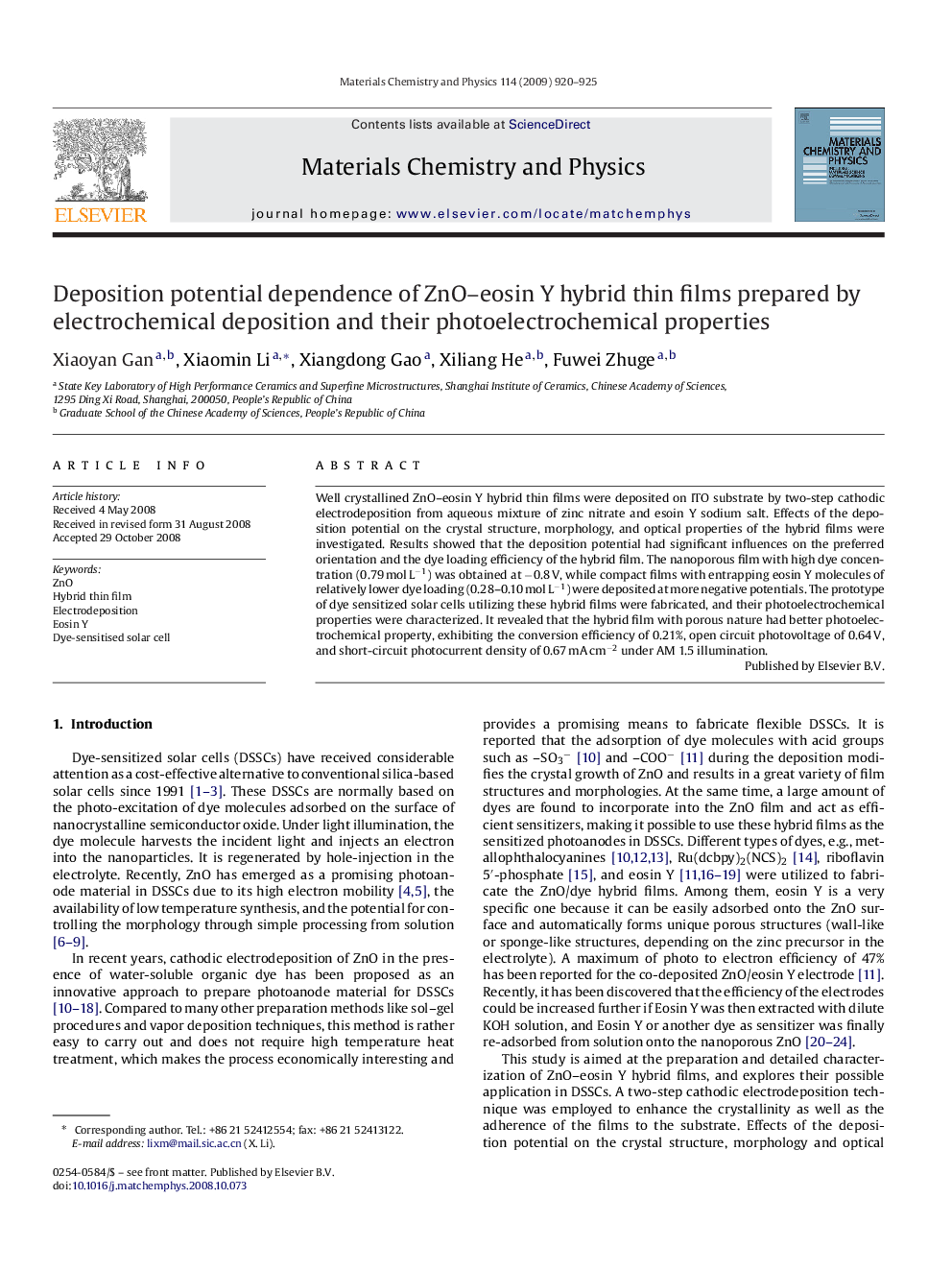| Article ID | Journal | Published Year | Pages | File Type |
|---|---|---|---|---|
| 1525875 | Materials Chemistry and Physics | 2009 | 6 Pages |
Well crystallined ZnO–eosin Y hybrid thin films were deposited on ITO substrate by two-step cathodic electrodeposition from aqueous mixture of zinc nitrate and esoin Y sodium salt. Effects of the deposition potential on the crystal structure, morphology, and optical properties of the hybrid films were investigated. Results showed that the deposition potential had significant influences on the preferred orientation and the dye loading efficiency of the hybrid film. The nanoporous film with high dye concentration (0.79 mol L−1) was obtained at −0.8 V, while compact films with entrapping eosin Y molecules of relatively lower dye loading (0.28–0.10 mol L−1) were deposited at more negative potentials. The prototype of dye sensitized solar cells utilizing these hybrid films were fabricated, and their photoelectrochemical properties were characterized. It revealed that the hybrid film with porous nature had better photoelectrochemical property, exhibiting the conversion efficiency of 0.21%, open circuit photovoltage of 0.64 V, and short-circuit photocurrent density of 0.67 mA cm−2 under AM 1.5 illumination.
